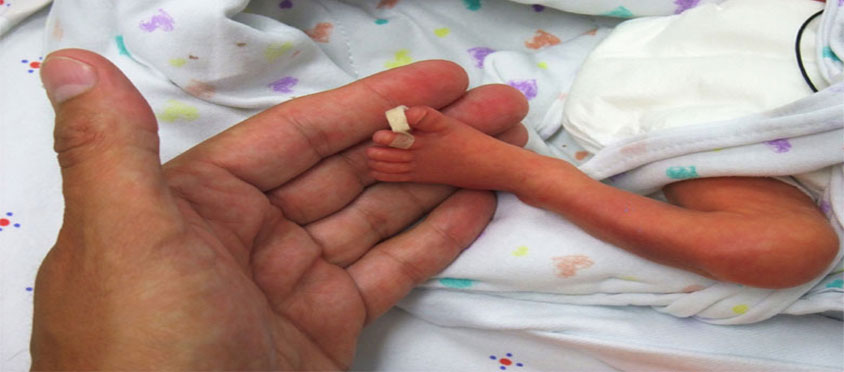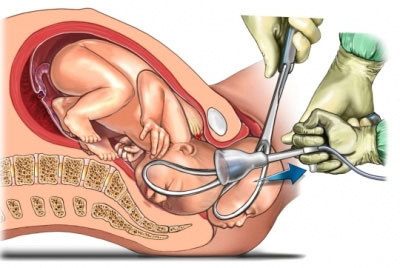It is necessary for women to know the signs of false labour, real labour and premature labour. Such knowledge will help them to take right action when the signs of labour are experienced. Read on and find the difference between, false labour, real labour and premature labour.It is normal to feel disappointed when you are alarmed by a false labour pain. The false labour makes it sound as though you need to begin from the very beginning! When you call it signs of labour it means that you are preparing for the actual event.
Thus, you can understand there is no reason to feel disappointed, as this "false pain" means you are actually nearing the day of your baby’s arrival. You can expect the onset of actual labour in few hours if you are close to or crossed your due date or may be in few weeks. Your muscles in the uterus are warming up for the whole task.
I am already getting small contractions, could it indicate premature labour?
If it is accompanied by pain, a vaginal discharge and you are getting more than four in an hour, you could be in for
premature labour. If not, then these are
Braxton-Hicks contractions of false labour. As mentioned before your uterus is having a sort of a practice session for the real thing. This normally starts from the 10th week and could last anywhere between 30 seconds and 2 minutes. In the 9th month, these contractions become more frequent and intense and could even be mistaken for the beginning of
real labour. You must try to lie down and relax or get up and walk around.
How do I distinguish between real labour and false labour?
If you are having erratic contractions that do not increase in frequency or severity, then real labour has not yet begun. If you were to walk around or change your position, these contractions will subside. In false labour, pain is felt in the lower abdomen rather than the lower back and the show, if any, will be brownish rather than pink or bloody. (Brownish discharge could even be the result of an internal examination or intercourse). If foetal movements intensify with each contraction, it could indicate foetal distress. So call your doctor now.
If you think you are experiencing false labour, the best thing that you can possibly do is take some rest. You can drink something hot or get some sleep suggests the doctors. If you find it getting difficult to sleep because of the contractions, you can try a comfortable position or go for a prenatal massage from a certified masseur to feel relaxed.
Signs of false labour shall make your labour more imminent and you need to get plenty of rest before the actual event. If you feel the contractions getting longer and stronger and more frequent, you need to get in touch with your doctor or midwife.
What happens after the onset of real labour?
Your cervix is about 1.5 inches in thickness before the onset of labour. Before dilating, the cervix gets softened, shifts in position and gets softened. These include all the preparations for labour and delivery.
In the initial stage the cervix opens and dilates 10cms before you start pushing. Early signs of labour mean 4cm of dilation. This is the time when you experience frequent contractions. The early
labour signs are less intense compared to active labour signs. In the final stage, your cervix is dilated about 10cms.
What is premature or preterm labour?
The signs of real labour like contractions, vaginal discharge and cervix beginning to open which are experienced during 37th week of pregnancy is known as preterm or premature labour. Such obvious signs may result in preterm delivery. Babies delivered preterm are very sensitive and extra care needs to be taken.
Who is at risk of premature or preterm labour?
There are plenty of factors linked with preterm labour. Take a look at some of them:
The chances of a preterm labour increases when you are carrying twins or triplets.
- In case of problems with placenta, cervix or your uterus.
- In case of chronic disorders like high blood pressure or diabetes.
- In case of obesity or too low weight in pregnancy.
- In case of stressful events like death of a loved one or accident.
- In case of anaemia, especially in early stages of pregnancy.
- In absence of prenatal care.
- If there is less than a 6 months gap between 2 pregnancies.
Proper medical care and timely intervention can help avert many of the complications in pregnancy. Make sure to take proper rest, eat well and enjoy a healthy lifestyle. Pregnancy is a wonderful time that you surely would not want to waste worrying all the time. For any questions and concerns, you can always get in touch with your doctor.
What are the signs of real labour? What are the causes of premature labour? How to identify the signs of false labour? Discuss here. 































